Who’s Flying in Your Woodlands? Guide to Migratory Birds
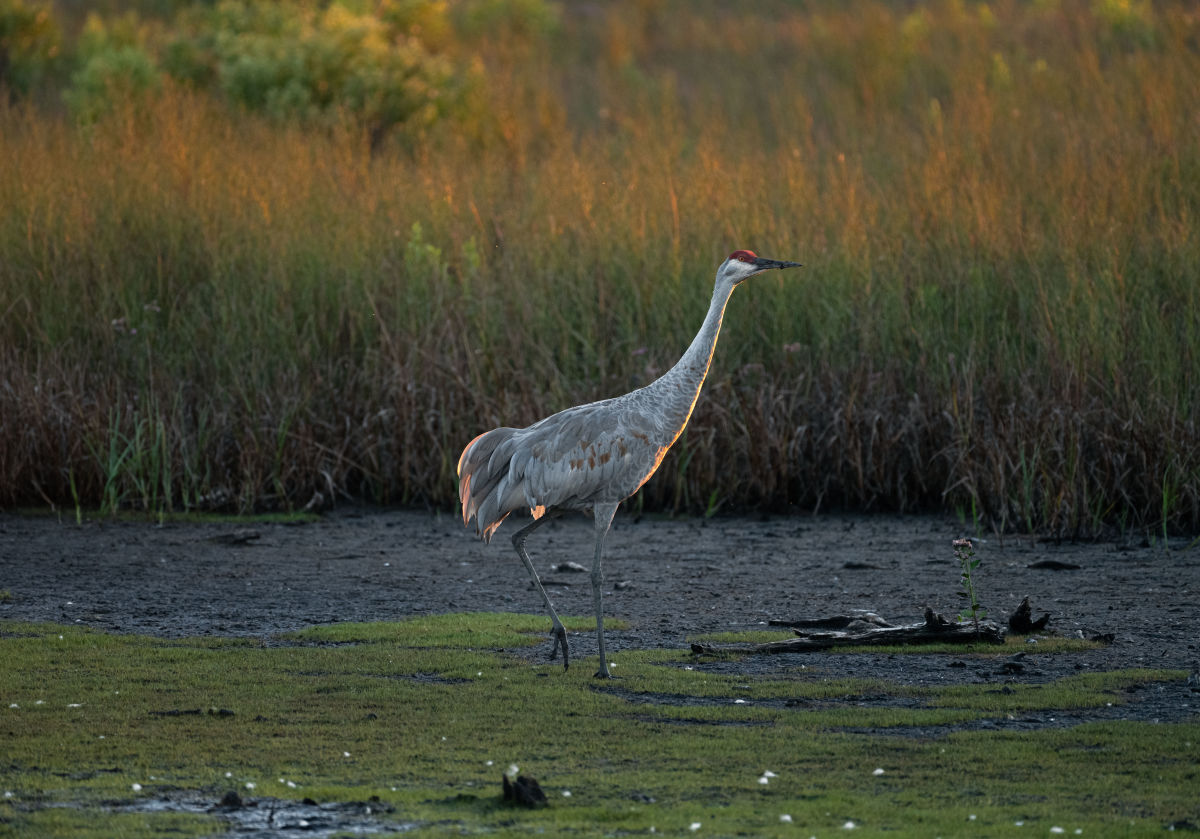
A sandhill crane walks across a clearing at Bombay Hook National Wildlife Refuge. ©Stephen Taglieri
The end of winter gives rise to spring migrations and an exciting experience for forest owners as wildlife returns to your woodlands. There are a variety of bird species that can be seen during this time of year, coming back to familiar territories they have not attended for many months. With many forest types exhibiting beautiful and colorful spring blooms, the beginning of the year is a perfect time for bird enthusiasts to get outside and enjoy the woodlands around them. For family forest owners, it’s also a great opportunity to take stock of both the bird species that call your woodlands a year-round home and those species that use your forest as a pit stop on their journey to their summer homes.
In this blog, we’ll highlight some of the common migratory bird species often found in U.S. woodlands. We’ll also give tips on how to find rare birds in your area and help birds that have been blown off course during their migrations. There are many ways to learn about and identify the birds in your area, from visually counting to identifying bird song. There is no “right” or “wrong” way to start bird watching, but getting outside and enjoying the woodlands around you is a great start.
Which Birds Are Migrating Through?
There are many species that cross the Canadian border for summer but travel south in colder weather. Many of these species can be observed year-round in warmer states such as Maryland and West Virginia but summer in colder areas such as Maine, Michigan, or Wisconsin. Migratory species don’t make their long journeys south in just one day, and they rely on healthy woodlands along the way to stop for food, water, and rest.
Bald Eagle
The U.S. national bird, bald eagles have a distinctive white head with deep brown plumage across the body. They also have a bright yellow beak and similarly colored legs. Each toe ends in a sharp talon, making these birds expert in scooping fish from the surface of ponds, lakes, and rivers. The bald eagle is a true conservation success story.It became extirpated (regionally extinct) in much of the country during the mid-1900’s.
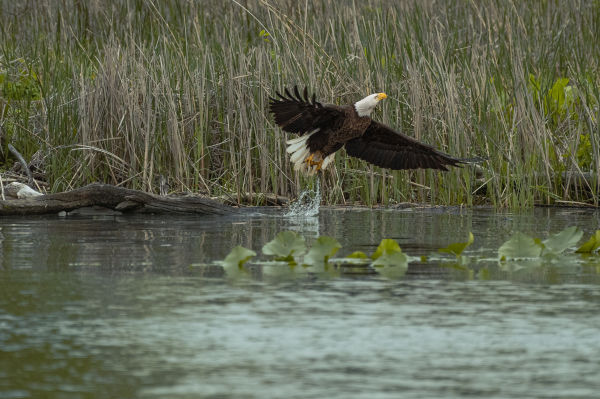
A bald eagle takes off in a splash after perching over the water. ©Stephen Taglieri
There was only one mating pair of bald eagles in the entire state of New York in 1979. But by 2006, there were 123 pairs across the state and 10,000 nesting pairs across the lower 48 states in 2006. Today we see an even greater success with 71,400 nesting pairs in the lower U.S.
Mourning Dove
Calling out with a unique, melancholy coo, the mourning dove almost sounds like an owl. These tan birds with black speckling on their feathers can be found throughout forests, fields, suburban neighborhoods and urban sprawls. Doves are social birds who mate for life and can usually be observed co-parenting their fledglings, swapping off who is on the nest and flying in tight formations.
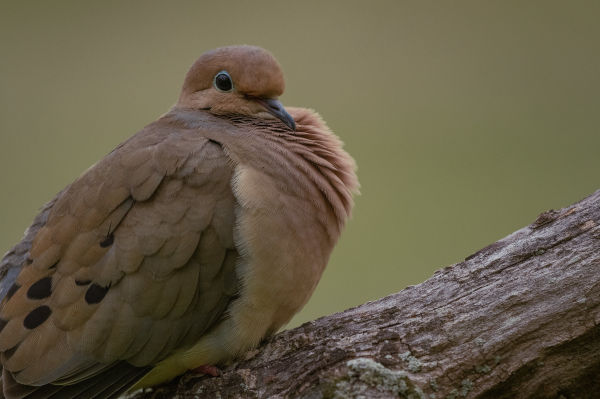
A mourning dove rests on a branch as it preens its feathers. ©Stephen Taglieri
Doves are strong fliers, with roughly 40% of their body weight devoted to flight muscles. They are also exceptional navigators that sense the Earth’s magnetic field to guide them on their migratory trek.
Great Blue Heron
The great blue heron is a tall, slender fishing bird with blue-grey plumage and a white belly. This bird has long legs that allow it to stand perfectly still in deep water while waiting for an unsuspecting fish to swim by. When prey is in range, the heron slowly positions itself before striking out with a sharp beak to skewer its next meal. Standing up to 3.5 feet tall and with large 6.4-foot wingspans, an adult great blue heron only weighs between 4.6 and 5.5 pounds.
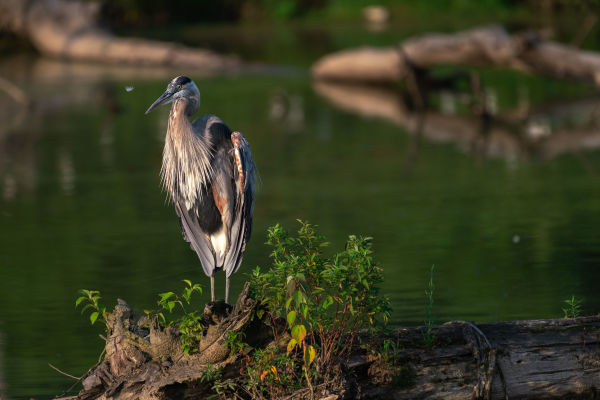
A great blue heron sits on a dead tree during a midsummer sunset. ©Stephen Taglieri
With hollow bones, these light birds can take to the air with their catch, mainly bass or carp, hanging from their beak. When these birds aren’t hunting, they will roost atop trees, preen their feathers, and assert their territories through dinosaur-like croaks and calls.
Birds Blown Off Course
As climate change increases the severity and rate of weather events, more bird species are affected by severe weather. Hurricanes can easily blow whole flocks off course during a migratory journey. In 2023 this led to multiple species occurring in areas where they’ve never been found before, and an opportunity for local birders to view species they’ve never seen. Forest owners are encouraged to contact a local wildlife shelter or animal protection officer if wildlife is found that is out of the norm. Wildlife nonprofits such as local chapters of the Audubon Society are sometimes able to transport these off-course birds back to their native range.
White Pelican
White pelicans have been spotted off course along the East Coast after an intense 2023 hurricane season. These massive birds can reach a size of 4 feet tall with a 9-foot wingspan. White pelicans are the second largest bird in North America, behind the California condor. To support such a large stature, the white pelican eats up to 4 pounds of food per day.
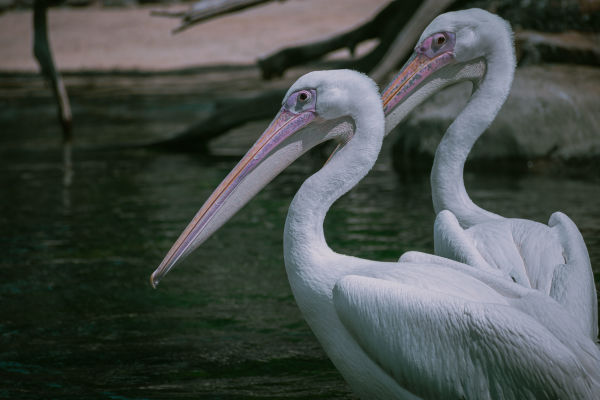
Two white pelicans rest in on some rocks in a marshland. ©Stephen Taglieri
When travelling in small flocks, white pelicans will cooperatively fish to maximize the number of fish they catch. Some pelicans will coordinate their swimming and herd their prey into the waiting bills of hungry flock members. When the white pelican can’t find food for itself, this species is skilled at stealing food from smaller birds, such as cormorants.
Sandhill Crane
A widespread bird species throughout the American Midwest and West Coast, a pair of sandhill cranes were blown off course in 2022 and landed in Delaware for breeding season. This species will return annually to its last breeding ground, so this off-course sandhill crane pair returned to the coast of Delaware in 2023 to breed once more. These birds mate for life and birders will most likely hear their trumpet calls before they’re able to see them.
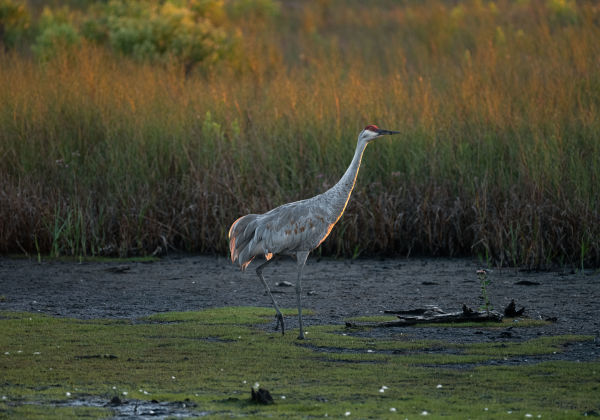
A sandhill crane walks across a clearing at Bombay Hook National Wildlife Refuge. ©Stephen Taglieri
A very resilient bird, sand hill cranes undertake long migrations each year for breeding season, travelling at a 13,000-foot elevation for hundreds of miles before winter. Once the chicks are hatched, it only takes them 8 hours to leave the nest and begin walking, hunting, and swimming with their parents.
American Flamingo
American flamingos are commonly sighted throughout the Caribbean, Latin America, and South America but, after Hurricane Idalia in 2023, flamingos were spotted in Ohio and Pennsylvania. This species can easily be blown off course to Florida during migrations, but it is very rare to see these birds farther north. When thriving in their normal habitat, American flamingos feed on brine shrimp, giving the flamingos their pink color derived from the shrimp’s carotenoid-rich algae. Flamingos feed with their heads upside down, scooping up crustaceans, seeds, larvae, and other tasty treats, then pushing out and filtering the food through water through comb-like plates in their mouth.
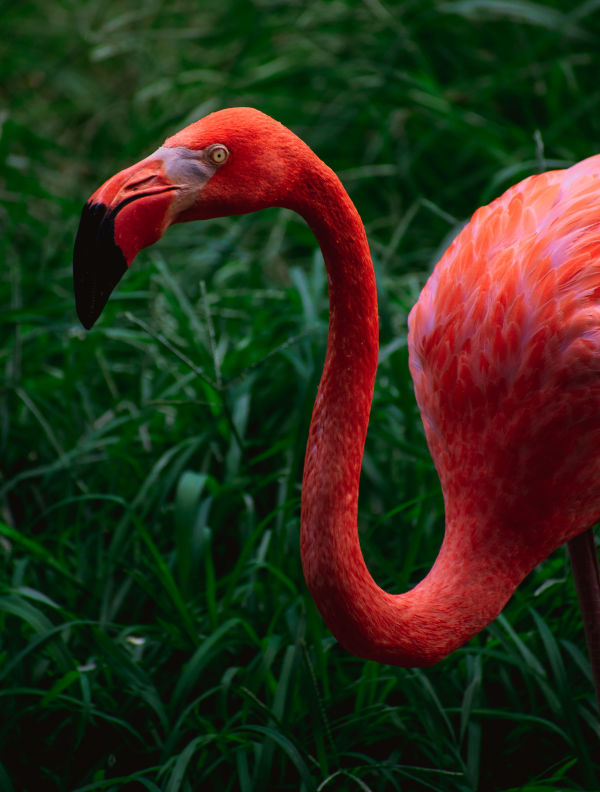
Blown off course, an American flamingo finds itself in a Pennsylvanian family pond. ©Stephen Taglieri
How to Monitor and Help Off Course Birds
It’s safe to say that, as extreme weather events become more common, more birds will be blown off course during migrations and end up in new regions. Aside from the species already mentioned, in the past three years trumpeter swans, rosette spoonbills and Steller’s sea eagles have all been spotted along the east coast in areas where they’ve never been seen before. If you see an animal on your property that’s outside its native range, you should contact your local Audubon Society chapter. If you’re interested in viewing some of these rare birds, you can check if any off-course species are in your area by using the eBird website where rare bird sightings are monitored and reported.
The Family Forest Carbon Program offers family forest owners expert guidance on how to improve the health of your woods, create habitat for wildlife, and treat invasive species. We’ll cover the cost of forestry consultations and guarantee annual payments to landowners while assisting the stewardship of your woods. Click here to learn more.
Related Articles

January 16, 2024
Who’s Flying in Your Woodlands? The Winter Edition
The winter months are surprisingly exciting time for forest owners wanting to enjoy wildlife on their land.

November 22, 2023
6 Ways to Attract Turkey to Your Woodlands
The wild turkey symbolizes a season of plenty in America. The following woodland management activities can help to meet the special needs of this unique bird.
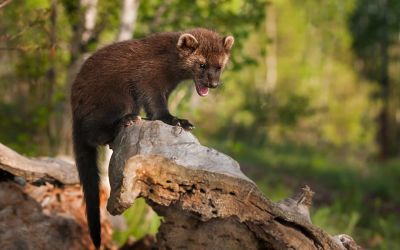
November 7, 2023
Managing Your Woods for Wildlife
With autumn colors spurring on winter migrations and the final excitement for animals getting ready for winter, it gives us a chance to think about wildlife in our lives.